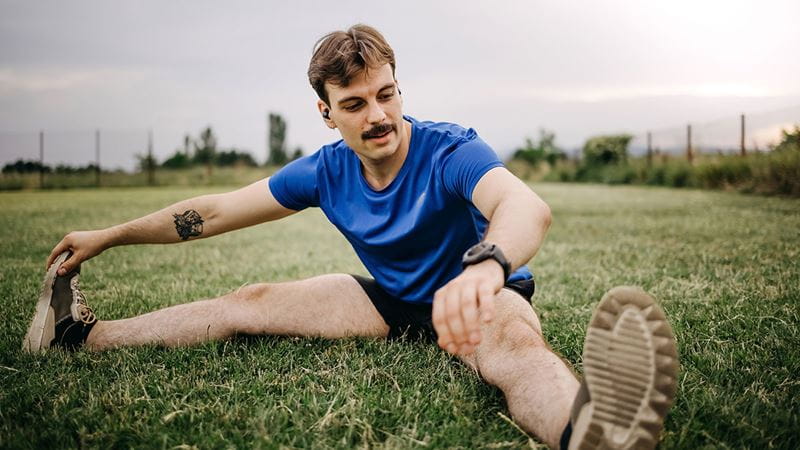Blog article
How to exercise safely in warm weather

It’s no secret that Australia’s sunny weather is one of the best parts of living down under.
However, the same sunny days we love can bring warm weather, posing challenges for staying active due to associated risks like heat exhaustion and heat stroke.
Thankfully, with the right strategies, you can safely enjoy your workouts and make the most of our beautiful summer days.
1. Know the signs of heat-related illnesses
Before heading out, it’s important to familiarise yourself with the symptoms of heat-related illnesses, which include heat exhaustion and heat stroke.
Heat exhaustion: Occurs when our core body temperature rises to 38-39°C. Symptoms include heavy sweating, pale skin, muscle camps, weakness, dizziness, nausea, and a rapid pulse.1
Heat stroke: When not treated, heat exhaustion can lead to heat stroke, when our core body temperature rises to 40°C and above. This leads to a restriction of blood flow to internal organs. Symptoms are often similar to heat exhaustion, but skin may be dry. Additional symptoms include confusion and/or agitation, and loss of consciousness.1
Heat stroke is a medical emergency and requires urgent medical attention. Call 000 for an ambulance and while waiting, try and get the person to cool down as quickly as possible by moving them into the shade, wetting their skin with cool water, and giving them water to drink if conscious.1
2. Stay hydrated
Unsurprisingly, staying hydrated is one of the most critical aspects of exercising in warm weather. Even if you're not thirsty, it’s essential to drink water regularly.
As a general guide (where one cup is 250ml):2
- Adults need about 8-10 cups of fluid a day
- Pregnant or breastfeeding women need about 9 cups of fluid a day
- Children need between 4-5 cups and teenagers need between 6-8 cups of fluid per day
If you’re exercising, especially in warm weather, you’ll have to drink even more. After exercising, aim to replace 1.5 times the fluid you lost while exercising. Don’t try and scull your water either – it’s best for your body to spread it over the two to six hours post exercise.3
3. Exercise at the right time (and/or place)
Timing and location can significantly impact your comfort and safety when it comes to exercising in summer. Avoid peak heat hours by exercising early in the morning or late in the evening when temperatures are cooler. With the sun being less intense, the risk of overheating is reduced.
If you can’t change the time of your exercise routine – change the place! Make use of indoor facilities where air conditioning is available, or, if you’re really set on exercising outdoors, choose shaded areas or paths with natural ventilation.
Remember, sun protection is needed when UV is 3 or above to reduce your risk of developing skin cancer.4
4. Dress appropriately and don’t forget to slop, slap, seek and slide too!
When it comes to working out, your clothing choices can help regulate your body temperature. Wear lightweight, breathable, and moisture-wicking fabrics that draw sweat away from your skin like cotton, and clothing that covers your shoulders, arms and legs.5
We’ve already covered Slip with our clothing recommendations, don’t forget to also:6
- Slop on SPF50 or higher broad-spectrum water-resistant sunscreen.
- Slap on a hat to protect your face, ears and neck.
- Seek shade whenever you can (this can reduce UV exposure by up to 75%).
- Slide on a pair of sunnies that meet Australian Standard AS1067 and fit your face .
The above tips will protect you from direct sunlight and reduce your risk of overheating.6
5. Adjust your workout intensity
In warm weather, it’s important to modify your exercise routine to avoid overexertion and reduce your risk of developing heat exhaustion and/or heat stroke. You can do this by:7
Starting slowly: If you’re not accustomed to exercising in the heat, gradually increase your intensity to allow your body to acclimatise.
Taking frequent breaks: Rest more frequently and listen to your body. If you feel dizzy, weak, or are excessively sweating, take a break in a cool place.
Modifying your routine: Consider lower-intensity activities like walking or swimming, which are less strenuous on your body compared to high-impact exercises.
6. Know your body
Understanding your personal limits and how your body reacts to heat can help you exercise more safely. Watch for signs of dehydration, overheating, or heat exhaustion, as early detection can prevent more serious issues.
Try and remember that your ability to handle heat can vary based on your fitness level. Just because a friend or loved one is fine to exercise in warmer weather, doesn’t mean you are – and that’s okay! The best kind of exercise is always done safely.
7. Use cooling techniques
If you’re planning to exercise on a warm day, there are a number of easy strategies you can incorporate to help keep your body temperature in check:1
Cool down: Apply a cool, damp cloth to your neck, wrists, and forehead. Taking a cool shower or bath can also help lower your core temperature after exercise.
Stay in the shade: Find shaded areas to exercise in and use portable fans to cool down during breaks.
Use ice packs: If you’re feeling overheated, placing ice packs on your pulse points (wrists, neck, ankles) can help cool your body more quickly.
Stay cool, stay hydrated, and enjoy exercising this summer!
How can health insurance help?
HBF extras insurance can include cover for a few services that may help keep you moving and feeling better, such as:
- Physiotherapy. From aches and pains to mobility issues and injuries, physio can help treat a wide range of physical conditions. (Learn more about physio cover.)
- Remedial massage. Recover with soft tissue manipulation that can help treat injuries or illness.
- Exercise physiology. Get support for managing, treating or preventing chronic illness or injury through exercise.
- Dietetics. Get personalised advice on healthy eating to support your exercise goals and overall health
If you’re an HBF member, you can check what you're covered for by logging on to myHBF or calling us on 133 423.



